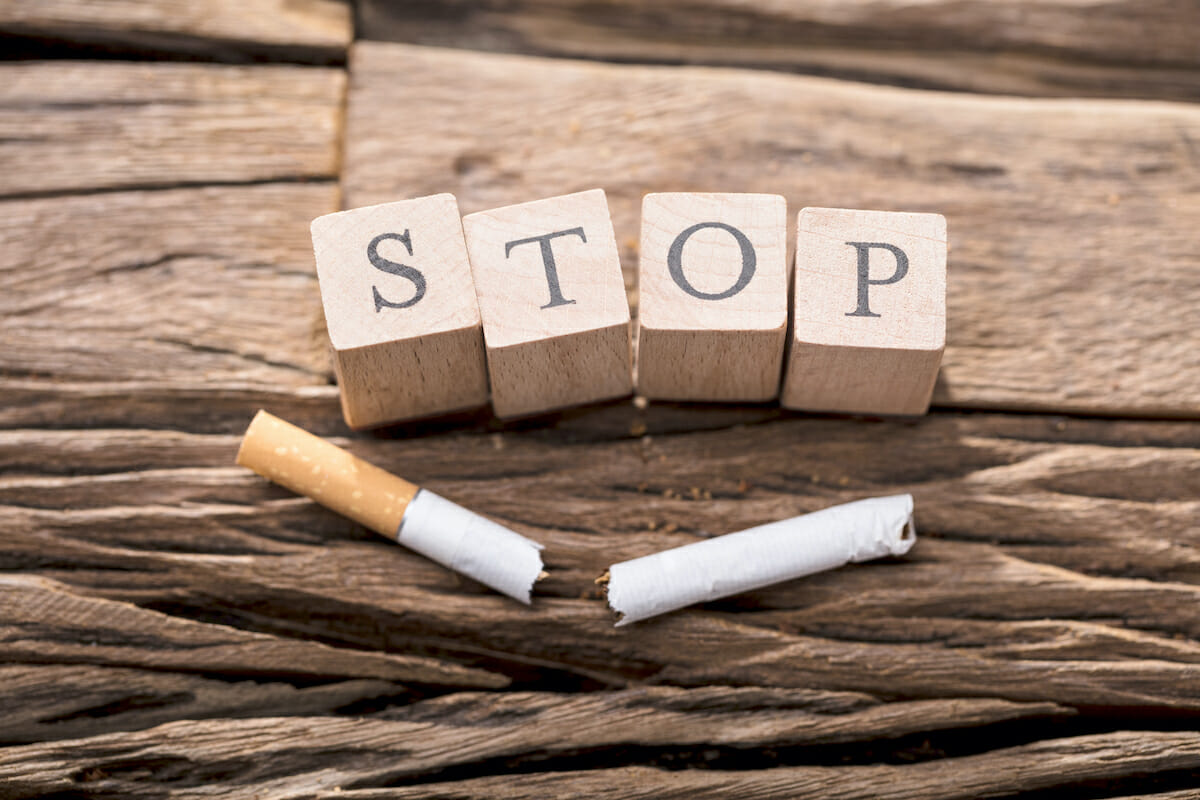Nicotine is the addictive substance present in tobacco products, including cigarettes and cigars. It is a chemical that can affect a person’s brain function.
Once the body adapts to regular nicotine intake, it can be challenging to give up smoking because of the uncomfortable symptoms of nicotine withdrawal.
When nicotine begins to leave the body, people typically experience physical and psychological withdrawal effects. Knowing what to expect and how to manage these effects can help people cope if they decide to stop using nicotine.
Withdrawal symptoms usually peak after a few days and then decrease over a period of a few weeks. After this time, the body has expelled most of the nicotine, and the withdrawal effects are mainly psychological. Understanding nicotine withdrawal symptoms can help people manage while they quit smoking.
What is nicotine withdrawal: When someone uses a nicotine product, such as a cigarette, their body absorbs the nicotine through the lining of the nose, mouth, and lungs. From these locations, it enters the bloodstream.
When nicotine reaches the brain, it activates areas involved in feelings of pleasure and reward. It also boosts the levels of a chemical called dopamine.
Nicotine also affects areas in the brain that play a part in:
- breathing
- memory
- appetite
- heart rate
Using nicotine for an extended period leads to changes in the balance of chemical messengers in the brain.
When a person stops using nicotine quickly, they disrupt this chemical balance. This can lead to the person experiencing physical and psychological side effects, such as cravings and low mood.
Experts describe this disruption of brain chemicals as nicotine addiction, and it is part of the reason why people find it so difficult to reduce or quit smoking.
The symptoms of nicotine withdrawal are both physical and psychological. The physical side effects only last for a few days while the nicotine leaves the body, but the psychological side effects can continue for much longer.
Although it may feel unpleasant, nicotine withdrawal, for the most part, has no associated health risks. However, if a person experiences significant changes in their blood pressure, this may affect their heart health and one should seek immediate help from their healthcare practitioner.
Timeline of nicotine withdrawal: Each person will have a different experience of nicotine withdrawal. Some individuals experience only mild symptoms for a few days, whereas others may have intense cravings and symptoms that last several weeks.
Withdrawal symptoms appear 4–24 hours after someone smokes their last cigarette. The symptoms peak about 3 days after quitting and then gradually subside over the following 3–4 weeks.
About 2 hours after smoking a cigarette, the body will have cleared about half of the nicotine. The level gradually decreases over the next few days until it can no longer affect the body.
Alongside the withdrawal symptoms, people also begin to notice positive changes. These may include:
- an improved sense of smell and taste
- less coughing
- easier breathing, particularly when exercising
How long does nicotine withdrawal last? Nicotine withdrawal symptoms typically begin 4–24 hours following a person’s last cigarette and peak after about 3 days.
Most people experience mild to moderate nicotine withdrawal symptoms that gradually lessen over several weeks. However, some people continue to have cravings for cigarettes months or even years after quitting.
If a person visits a place where they used to smoke or spends time with friends who still smoke, they may experience a stronger craving.
Can quitting cause anxiety? Anxiety is one of the most common emotional effects of quitting nicotine. A person may experience anxiety and irritability as their brain adjusts to the lack of nicotine.
For some people, the feeling is mild and goes away after a few days. For others, it is more intense and may persist for weeks.
There are several ways to manage anxiety during nicotine withdrawal, including:
- practicing relaxation techniques, such as deep breathing or yoga
- doing enjoyable activities, such as going for a walk in nature
- increasing physical exercise levels
- reducing caffeine intake by limiting or avoiding coffee, soda, and tea
- talking with friends and family members for support
- joining a smoking cessation group or speaking with a counselor
- avoiding triggers, such as places where the person used to smoke
- using nicotine replacement therapy
If anxiety is severe or persists for more than a few weeks, it is best to speak with a doctor to rule out other underlying conditions.
Treating nicotine withdrawal: Quitting nicotine is difficult because the addiction is both physical and psychological. Many people benefit from nicotine replacement products and other forms of support during the period of nicotine withdrawal.
Treatments for nicotine withdrawal include:
Nicotine replacement therapy: Nicotine replacement therapy (NRT) is an umbrella term for products that are tobacco alternatives and contain smaller amounts of nicotine. They include:
- chewing gum
- skin patches
- inhalers
- nasal or mouth sprays
No single type is necessarily better than another. However, combining different types of NRT could have a stronger effect than a single method alone.
Research has found that using NRT can increase the chance of quitting by 50–60%. A person can use NRT to reduce their nicotine dosage gradually until they no longer need to use it.
NRT is a common and successful treatment for nicotine withdrawal. However, many people still experience some mild to moderate withdrawal symptoms.
Although NRT does produce side effects, they are usually easier to manage than the symptoms of nicotine withdrawal without NRT. Possible side effects of NRT include:
Medication: Several types of medication can help treat nicotine withdrawal, including:
- Varenicline (Chantix): This drug can reduce cravings and block the rewarding effects of smoking.
- Bupropion (Zyban and Wellbutrin): Doctors may prescribe the Zyban brand to reduce nicotine cravings or the Wellbutrin brand to act as an antidepressant.
E-cigarettes: Although e-cigarettes contain nicotine in vapor form, they do not contain the same host of harmful substances as other tobacco products. A person can use e-cigarettes instead of cigarettes, pipes, or other tobacco products. However, experts do not yet know the long-term health risks of smoking e-cigarettes. These devices may provide some relief from withdrawal and cravings when a person is trying to quit tobacco smoking. However, more research is necessary to determine whether they are truly effective.
Counseling: Counseling can help people cope with the psychological and physical aspects of nicotine withdrawal. People can have sessions with a therapist or join a support group.
It can be a valuable addition to NRT in some cases.
Counseling can help people identify and address triggers that prevent them from quitting.
Tips for coping: People should remember that many cravings only last for 10–20 minutes. This means that when someone feels a craving coming on, they can distract themselves until it passes.
A person may find that the following tips and strategies help them copeTrusted Source with nicotine withdrawal symptoms:
- preparing themselves mentally for the reality of withdrawal symptoms
- making a list of the benefits of quitting and re-reading them when a craving hits
- taking deep breaths or using other relaxation techniques
- exercising more regularly during withdrawal, especially as a distraction from cravings
- adding social pressure by telling people about the decision to quit
- avoiding triggers, such as drinking alcohol or visiting specific places
- being realistic about how long quitting can take
- taking up new hobbies and keeping busy
- spending more time with friends who do not use nicotine
Seeking help for addiction may seem daunting or even scary, but several organizations can provide support.If you believe that you or someone close to you is struggling with addiction, you can contact the following organizations for immediate help and advice:
- Substance Abuse and Mental Health Services Administration (SAMHSA): 800-662-4357 (TTY: 800-487-4889)
- National Suicide Prevention Lifeline: 800-273-8255
In summary, a person may find nicotine withdrawal symptoms uncomfortable and feel overwhelmed at times, particularly in the first week after quitting. Some people return to smoking because of this or are afraid of trying to quit.
However, many people successfully overcome the challenges of nicotine withdrawal to achieve the multiple health benefits of quitting. It is important not to give up, as it can take a few tries before a person kicks the habit for good.
Sources: Medical News Today, https://www.medicalnewstoday.com/articles/323012;
7 common withdrawal symptoms and what you can do about them. (2022).
https://www.cdc.gov/tobacco/campaign/tips/quit-smoking/7-common-withdrawal-symptoms/index.html
How to quit smoking plan — 8 steps to quitting for good. (2021).
https://www.addictionsandrecovery.org/quit-smoking/how-to-quit-smoking-plan.htm
Nicotine replacement therapy to help you quit tobacco. (2021).
https://www.cancer.org/healthy/stay-away-from-tobacco/guide-quitting-smoking/nicotine-replacement-therapy.html
What do we know about e-cigarettes? (2022).
https://www.cancer.org/healthy/stay-away-from-tobacco/e-cigarettes-vaping/what-do-we-know-about-e-cigarettes.html
# # #












